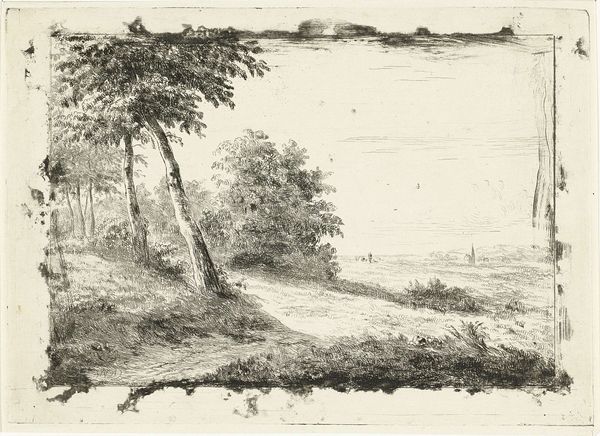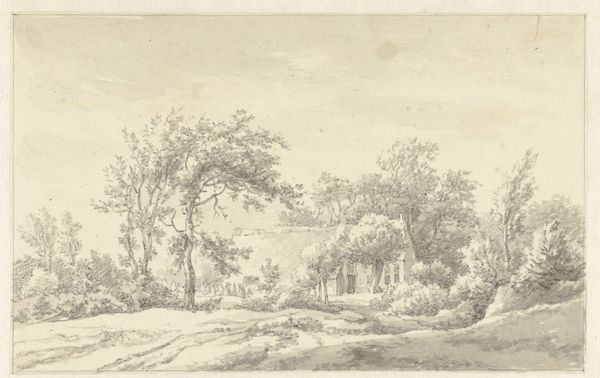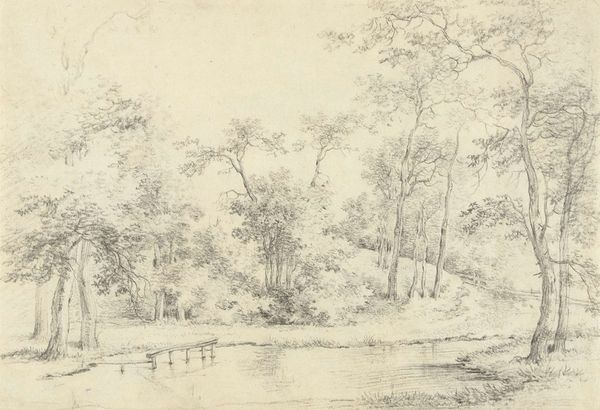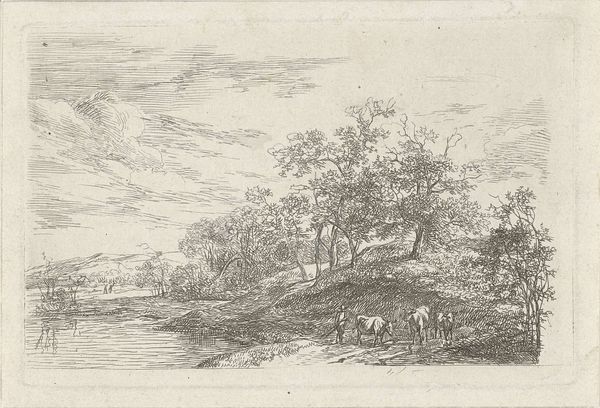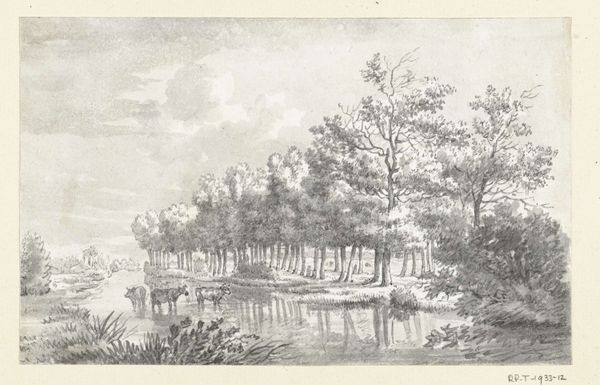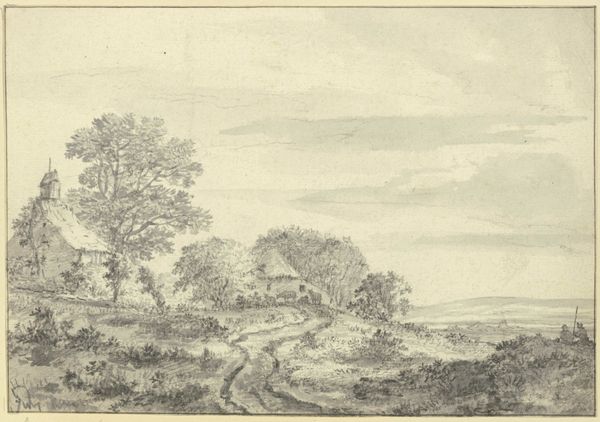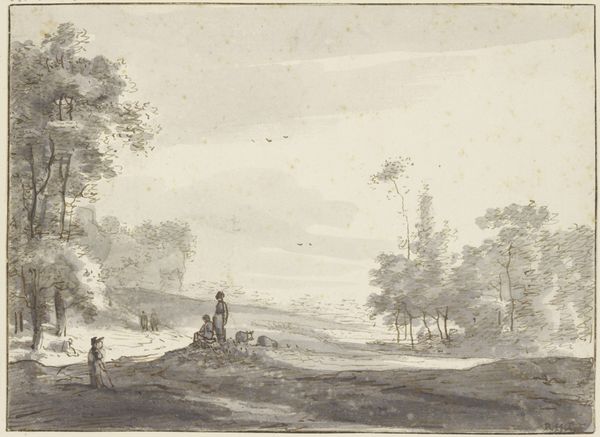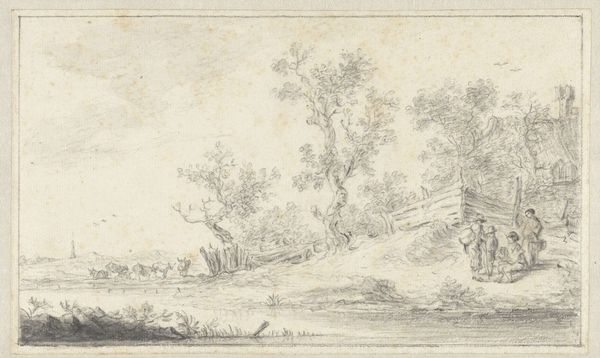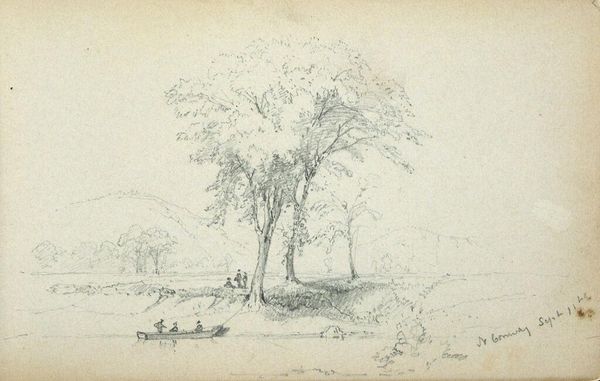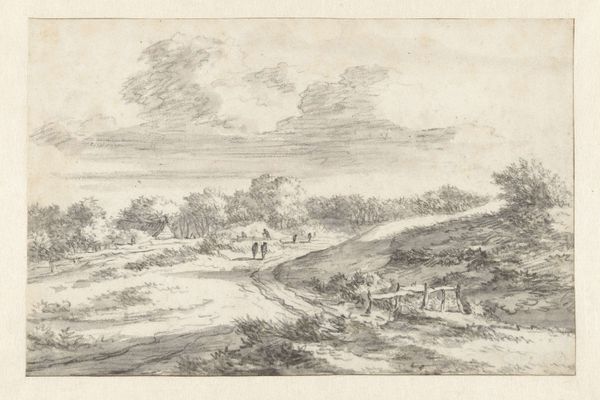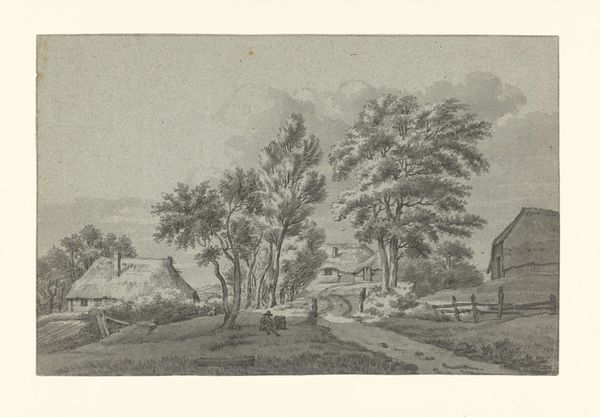
Dimensions: height 145 mm, width 197 mm
Copyright: Rijks Museum: Open Domain
Curator: Let's explore "Landschap met een schaapherder," a landscape piece created between 1823 and 1883 by Johannes Adrianus van der Drift. It's an etching. Editor: Immediately, I notice the dominance of the etched line and its role in suggesting form. The delicate hatching seems so economical, yet captures the landscape’s mood with such detail. What can you tell me about the composition and symbolic elements? Curator: The image's symbolism aligns perfectly with the Romantic movement; observe how nature dominates humanity and consider that period's vision of the world as a living divine creation. There's a lone shepherd, relatively small within this vast panorama. The forest suggests the mysteries of an untouched landscape, where ancient myths and dreams reside. Editor: From a material perspective, the choice of etching seems quite intentional, doesn’t it? The relatively reproducible print allowed a wider dissemination of this romantic view of the pastoral, potentially feeding a growing market for art amongst the emerging middle classes. Curator: Exactly! This artform fostered a connection between the audience and idealized representations of nature—inviting everyone to discover the innate, profound sense of self. The artist draws from, and feeds into, a longing for the authentic. Editor: And it’s a carefully manufactured authenticity. It prompts questions regarding consumption—what kind of lifestyle and values were associated with possessing such an image, and how might that influence identity in this era? Curator: I find the slight imperfection, some brown marks visible to the upper left of the print, fascinating! It reminds me of Wabi-Sabi philosophy - where an aesthetic sense is sought that accepts flaws as inherent parts of beauty. Here, in the context of Romanticism, these subtle flaws might even add another layer to that desire to escape into nature and an idyllic life! Editor: Fascinating, especially considering how Romanticism was tied up in nationalist sentiment! This image reflects a selective framing of what it meant to experience and relate to "the land." It seems quite purposeful for evoking feelings associated with that construction. Curator: Agreed. This detailed piece truly allows one to imagine life and how individuals experienced and dreamed of their places within the environment, even in a fleeting impression of landscape, as if remembering a shared cultural consciousness. Editor: Indeed, the image makes one consider how landscapes function—not only as visual representations, but as material and cultural productions intertwined with larger social narratives.
Comments
No comments
Be the first to comment and join the conversation on the ultimate creative platform.


